Popular on Food52
21 Comments
Cinnamin
June 16, 2015
The hedgehog looks easy and it is; but I prefer using a super sharp knife n peeling n slicing. The hedgehog leaves a pretty good layer of flesh at the bottom, which can only be eaten if you get messy and scrape it off with your teeth. Totally worth it- but peel n slice is cleaner
MQAvatar
July 9, 2013
I love mango and have been a hedgehog man my whole life (I learned it from my mom), but I just learned a new method to prepare mango in Afghanistan. It's really fun and less messy, slightly.
1. Place a mango on a cutting board, horizontally (east to west).
2.At about the middle of the mango, cut along the Y-axis (north to south) down to the pit and then around the entire pit. You now have two "hemispheres" of mango (one slightly thinner, on slightly wider), connected by the pit.
3. Grab each side with each hand (the cut will be in the middle) and twist. You now have one hemisphere with a pit sticking out and another hemisphere of mango that you can scoop out with a spoon.
4. Scrape the exposed pit of tasty mango. Then, grab the pit with your hand (or with your teeth) and twist again to remove the pit from the other hemisphere, leaving you with another half of mango that you can scoop out.
Enjoy!
1. Place a mango on a cutting board, horizontally (east to west).
2.At about the middle of the mango, cut along the Y-axis (north to south) down to the pit and then around the entire pit. You now have two "hemispheres" of mango (one slightly thinner, on slightly wider), connected by the pit.
3. Grab each side with each hand (the cut will be in the middle) and twist. You now have one hemisphere with a pit sticking out and another hemisphere of mango that you can scoop out with a spoon.
4. Scrape the exposed pit of tasty mango. Then, grab the pit with your hand (or with your teeth) and twist again to remove the pit from the other hemisphere, leaving you with another half of mango that you can scoop out.
Enjoy!
crazyblues
May 9, 2013
cutting off the cheeks, then slicing into orange shaped pieces, then removing the peel gives you the cleanest slices with the least of mess. unless of course you grab the seed and eagerly chomp off the rest of the fruit. yum. Here in costa rica, it's mango season. They lie in piles under the mother tree, by the side of the road...
skooj
May 9, 2013
Thank you LoStyles and Panfusine. I now know why I get a terrible rash after touching or peeling mangoes! It's called Mango Rash (I googled it). I didn't know it existed. Thank you so much!
re-arranging_jars
May 8, 2013
Interesting fact: Mango tree sap contains urushiol, the same compound that is found in poison oak and poison ivy. Often you can see some sap dried on the skin of the fruit near the stem end (it's shiny). This can give you a nasty rash, especially if you are SUPER sensitive as I am. I have to trick other people into doing the peeling for me if I want to eat mangoes risk free.
Panfusine
May 8, 2013
true.. the potency of the sap is higher in the raw green mangoes, a standard warning was to make sure your eyes were protected before you even thought about picking one off the tree (it spurts out as an oily sap). Same issues with Cashew apples & the raw cashew nuts
chris
June 10, 2015
This takes me back to grade school, when I was living in Australia. I would pick mangoes from the tree or ground and eat them on the way to school. I had horrible rashes around my mouth, all season! My face still burns, when I gnaw on the pit (too much delicious fruit to waste) but now I rinse my mouth with water. I never knew about the sap.
Lalitha R.
May 8, 2013
As someone who grew up eating a lot of mangoes in India, I would say the varieties that are available in US are tasteless and bland compared to what I have tasted.
KirstenS
May 8, 2013
I believe that's true of any fruit that's shipped several thousands of miles before it's purchased. However, not all of us have the opportunity to live in the shade of beautiful mango trees, so we must make do with what's available!
Lalitha R.
May 8, 2013
I googled and found that US allows only two varieties of mangoes from India to be imported. They are both from northern India, so as a south Indian I really miss those delicious fruits from home. Back home there used to be small mangoes of the size of an apple. We used to eat it with skin and is a popular after school snack. :)
Lalitha R.
May 9, 2013
The same one you mentioned in your comment (crush with palm and suck it directly ones); my brother always consumes it like that but I don't for the fear of the insects that live inside the seed.
KirstenS
May 8, 2013
This is the technique I've always used, but they can still be wobbly and (especially after you cut the first one) slippery, so be careful! I got a nice slice when prepping mangoes for chutney a few weeks ago!
LazizaBites
May 8, 2013
thanks for the tips! totally identify w/ your description of yourself - no egg on my food, don't like watery sauces, and yes def. rip of piece of bread in supermarket parking lot. :)
Panfusine
May 8, 2013
hedgehog camp as well... and brazen enough to admit that I love sucking the pits dry after cutting off the cheeks.. Thats the best part of messy mango eating. In fact there are some varieties of mangoes such as 'Chausa' that are best eaten by squeezing the whole fruit between the palms, cutting off the stem end and sucking the pulp in its entirety, leaving behind the seed inside the leathery peel
AntoniaJames
May 8, 2013
panfusine, you make me laugh! I'm right there with you in the "brazenly sucks the pits dry" department. ;o)
Cathryn E.
June 14, 2017
My parents used to give me the pit to gnaw on. Then we would style the "hair" on the pit and let it dry out, later attaching googly eyes. I had a whole collection of little mango people.
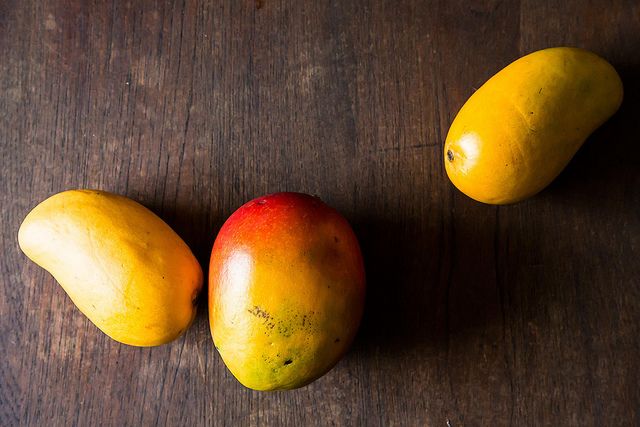
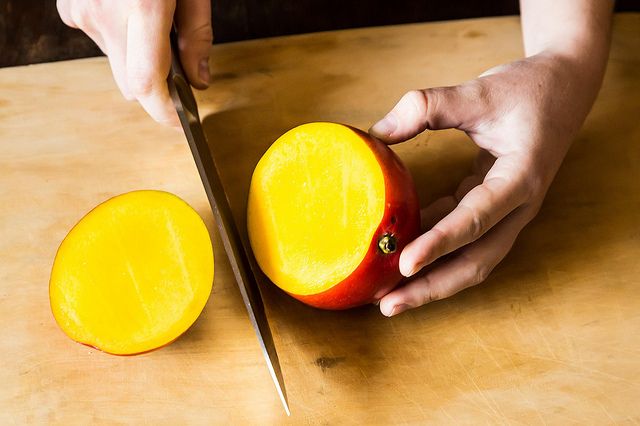

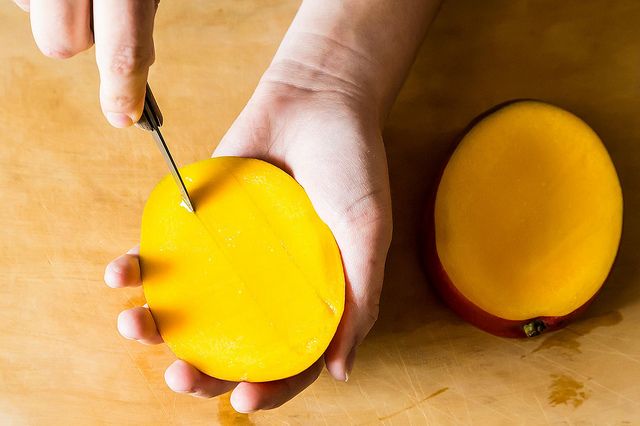

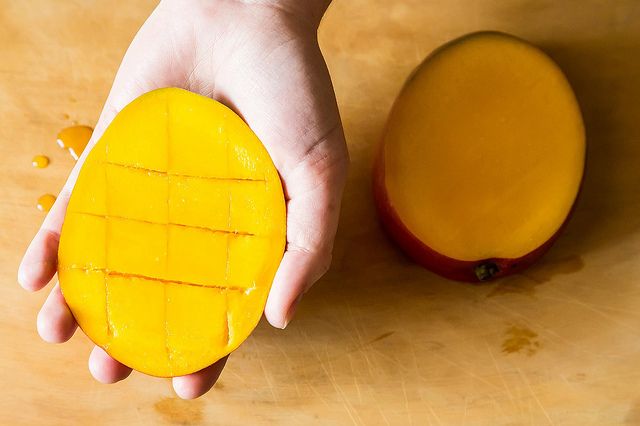
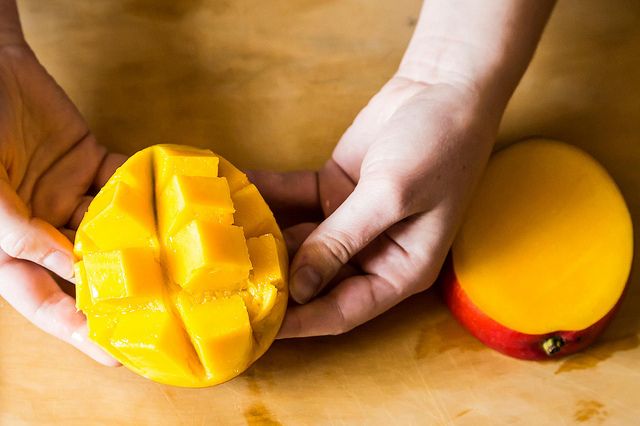


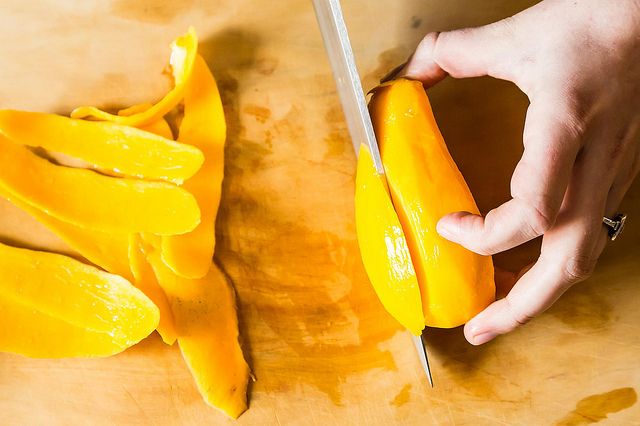

See what other Food52 readers are saying.